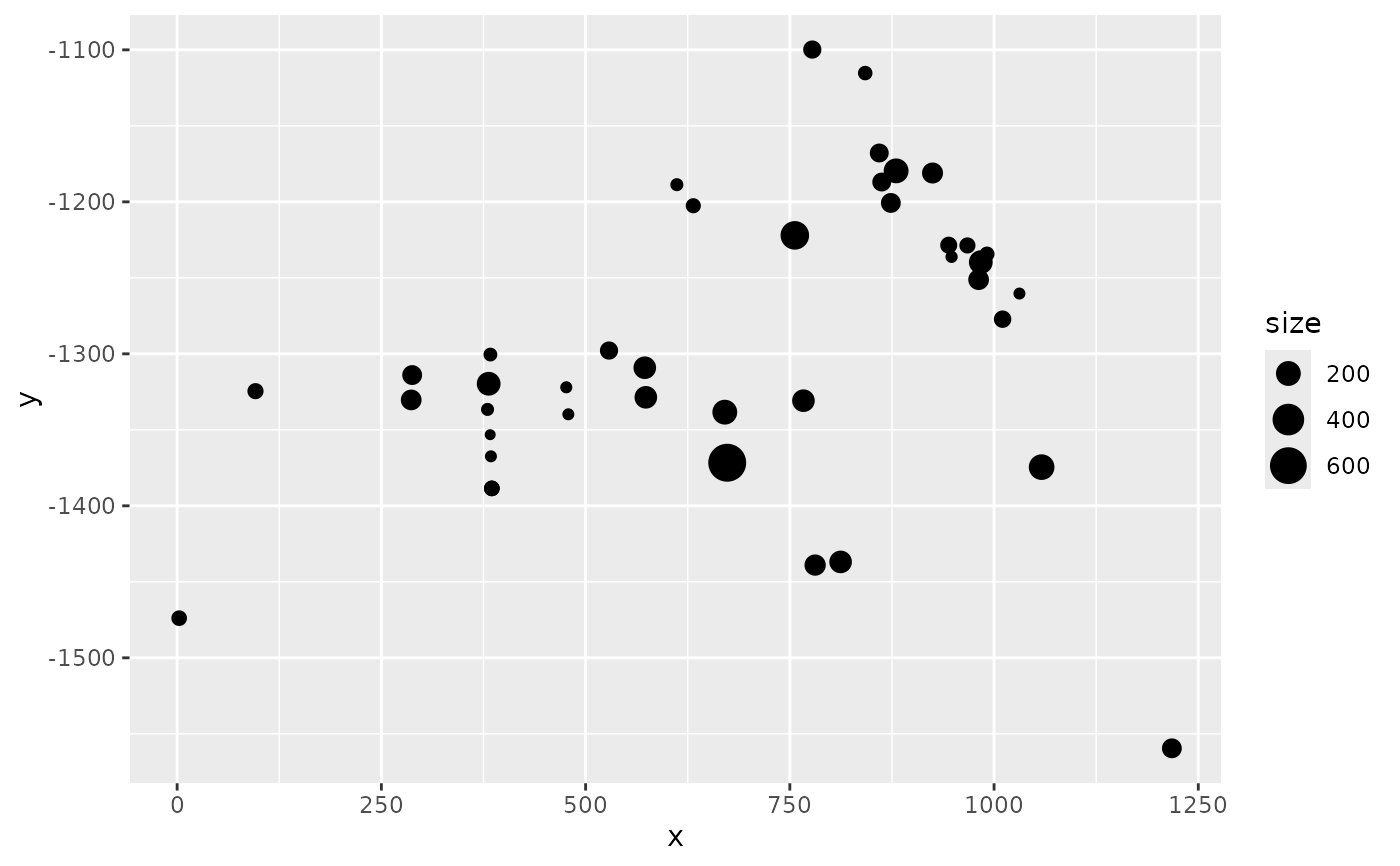Uses the ggplot2::fortify() function to turn the SpatialPolygons objects
into a data.frame. Then calls geom_polygon to plot the polygons. Requires
the ggplot2 package.
Usage
# S3 method for class 'SpatialPolygons'
gg(data, mapping = NULL, crs = NULL, ...)Arguments
- data
A
SpatialPolygonsorSpatialPolygonsDataFrameobject.- mapping
Aesthetic mappings created by
aesused to update the default mapping.- crs
A
CRSobject defining the coordinate system to project the data to before plotting.- ...
Arguments passed on to
geom_sf. Unless specified by the user, the argumentalpha = 0.2(alpha level for polygon filling) is added.
Details
Up to version 2.10.0, the ggpolypath package was used to ensure
proper plotting, since the ggplot2::geom_polygon function doesn't always
handle geometries with holes properly. After 2.10.0, the object is
converted to sf format and passed on to gg.sf() instead, as ggplot2
version 3.4.4 deprecated the intenrally used ggplot2::fortify() method
for SpatialPolygons/DataFrame objects.
See also
Other geomes for spatial data:
gg(),
gg.SpatRaster(),
gg.SpatialGridDataFrame(),
gg.SpatialLines(),
gg.SpatialPixels(),
gg.SpatialPixelsDataFrame(),
gg.SpatialPoints(),
gg.sf()
Examples
# \donttest{
if (require("ggplot2", quietly = TRUE) &&
requireNamespace("terra", quietly = TRUE) &&
bru_safe_sp() &&
require("sp")) {
# Load Gorilla data
gorillas <- inlabru::gorillas_sf
gcov <- gorillas_sf_gcov()
elev <- terra::as.data.frame(gcov$elevation, xy = TRUE)
elev <- sf::as_Spatial(sf::st_as_sf(elev, coords = c("x", "y")))
# Turn elevation covariate into SpatialGridDataFrame
elev <- sp::SpatialPixelsDataFrame(elev, data = as.data.frame(elev))
# Plot Gorilla elevation covariate provided as SpatialPixelsDataFrame.
# The same syntax applies to SpatialGridDataFrame objects.
ggplot() +
gg(elev)
# Add Gorilla survey boundary and nest sightings
ggplot() +
gg(elev) +
gg(gorillas$boundary, alpha = 0.0, col = "red") +
gg(gorillas$nests)
# Load pantropical dolphin data
mexdolphin <- inlabru::mexdolphin_sp()
# Plot the pantropical survey boundary, ship transects and dolphin sightings
ggplot() +
gg(mexdolphin$ppoly) + # survey boundary as SpatialPolygon
gg(mexdolphin$samplers) + # ship transects as SpatialLines
gg(mexdolphin$points) # dolphin sightings as SpatialPoints
# Change color
ggplot() +
gg(mexdolphin$ppoly, color = "green") + # survey boundary as SpatialPolygon
gg(mexdolphin$samplers, color = "red") + # ship transects as SpatialLines
gg(mexdolphin$points, color = "blue") # dolphin sightings as SpatialPoints
# Visualize data annotations: line width by segment number
names(mexdolphin$samplers) # 'seg' holds the segment number
ggplot() +
gg(mexdolphin$samplers, aes(color = seg))
# Visualize data annotations: point size by dolphin group size
names(mexdolphin$points) # 'size' holds the group size
ggplot() +
gg(mexdolphin$points, aes(size = size))
}
 # }
# }